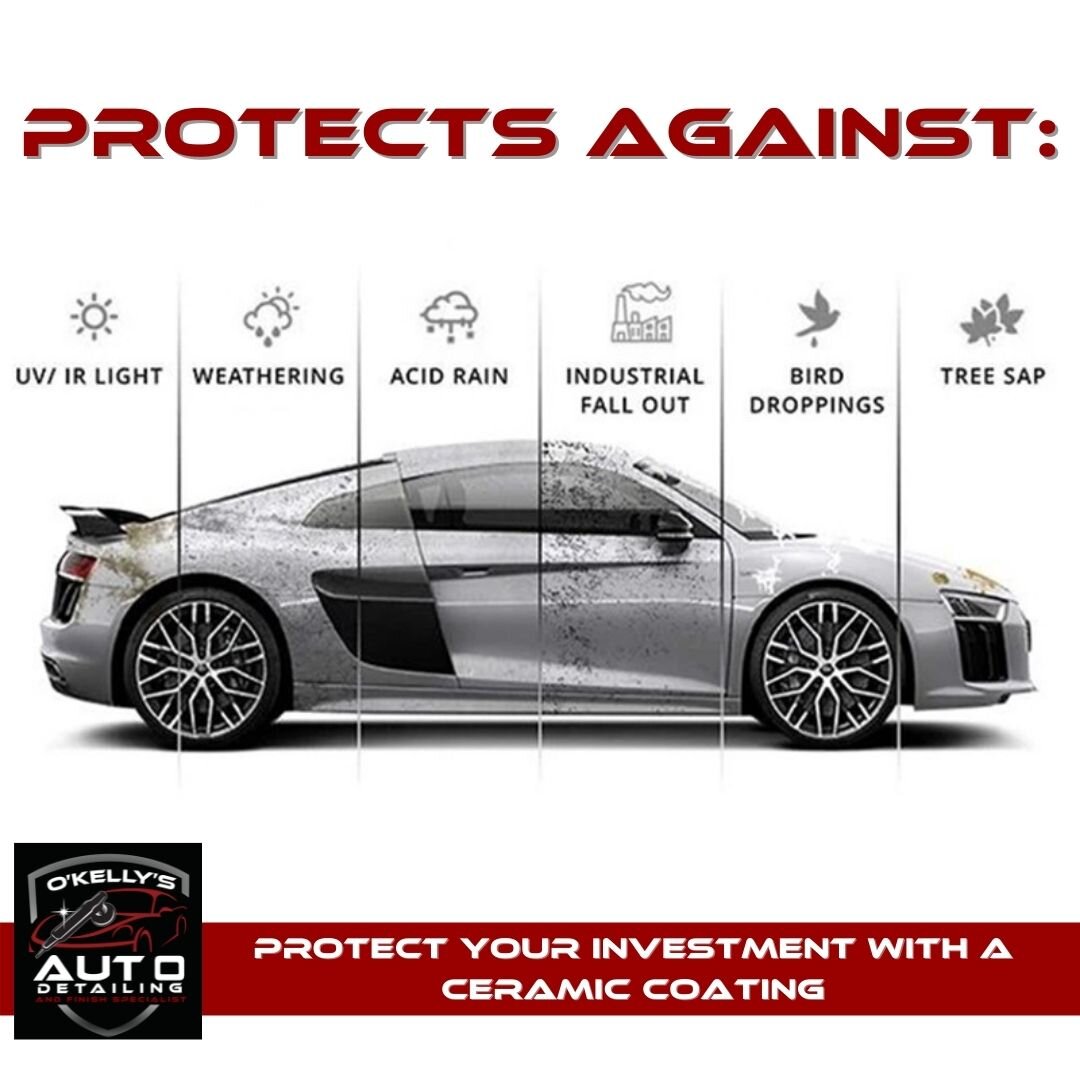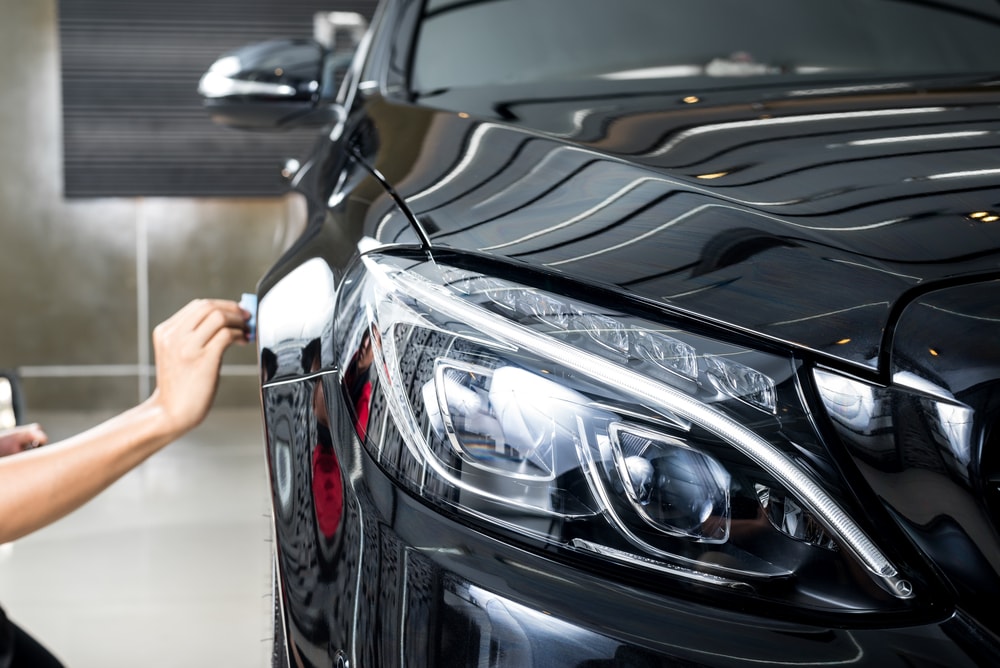Top Quality Ceramic Coatings San Jose for a Flawless End up
Top Quality Ceramic Coatings San Jose for a Flawless End up
Blog Article
Introducing the Scientific Research Behind Ceramic Coatings: How Does It Work and Why Is It Above Typical Options?
Ceramic layers have actually been obtaining appeal in various markets for their outstanding performance and toughness. Comprehending how ceramic coatings job and why they outmatch conventional choices is essential for those seeking to improve the durability and strength of their materials.
The Chemistry of Ceramic Coatings
In recognizing ceramic finishings, delving into the intricate chemistry behind their structure is vital for grasping their functionality and longevity. Ceramic coverings are mostly made up of silicon dioxide (SiO2), which forms a protective and strong layer when related to numerous surface areas. This chemical structure offers extraordinary resistance to warmth, chemicals, and deterioration, making ceramic finishings highly looked for after for a variety of applications.
The chemistry behind ceramic layers involves the development of covalent bonds in between silicon and oxygen atoms, producing an inflexible network that enhances the layer's sturdiness and longevity. In addition, the visibility of other components such as titanium, aluminum, and zirconium further improves the finish's homes, offering increased solidity and bond to surfaces.
Recognizing the chemical make-up of ceramic layers enables the personalization of formulas to match specific needs, whether it be for automotive, commercial, or domestic functions. By taking advantage of the power of chemistry, ceramic coatings continue to lead the way for premium security and efficiency in numerous sectors.
Advantages of Ceramic Coatings

As a result, ceramic finishings make cleansing and preserving surfaces a lot simpler and less time-consuming. Overall, the wide range of benefits provided by ceramic finishings make them a premium choice contrasted to typical finish approaches.
How Ceramic Coatings Bond
Ceramic finishes bond to surface areas with a procedure that involves molecular adhesion and chemical communications. When a ceramic finishing is put on a surface area, it develops a strong bond by chemically sticking to the surface area at a molecular degree. This bond is developed with the formation of covalent bonds, which are durable and extremely solid. The ceramic covering's particles pass through the pores of the surface area, producing a tight grip that withstands splitting up.
Moreover, the chemical communications between the ceramic finishing and the surface better enhance the bond. ceramic coatings san jose. These communications permit the ceramic coating to develop a constant and seamless layer on the surface, providing exceptional security and resilience. Unlike conventional finishings that may sit on the surface without completely bonding, ceramic finishings develop a long-term bond that is resistant to chemicals, UV rays, and rough ecological problems

Essentially, the bonding mechanism of ceramic coverings makes certain a efficient and long-lasting safety layer that exceeds conventional layer options. This remarkable bond adds to the longevity, scrape resistance, and longevity of ceramic coverings, making them a recommended selection for various applications.
Toughness of Ceramic Coatings
The remarkable long life of ceramic coatings originates from their robust molecular adhesion and chemical communications with surfaces, making certain a sturdy safety layer that surpasses traditional finishing choices. As soon as applied, ceramic finishings create a strong bond with the substratum, developing a resistant barrier against numerous environmental stressors such as UV radiation, chemicals, and abrasions. This bond is so safe that it can withstand the rigors of daily use without wearing away or degrading swiftly.
Unlike standard layers that might degrade over time, ceramic coatings keep their stability for an extended duration, giving durable protection for the underlying surface. Overall, the phenomenal longevity of ceramic coverings makes them a superior choice for securing a broad range of surface areas in numerous applications.
Ceramic Coatings Vs. Standard Options
In comparison to check this site out conventional layer methods, ceramic layers use an unique mix of longevity and safety abilities that set them apart in numerous surface area defense applications. Conventional alternatives such as wax or sealers supply a momentary layer of protection that can disappear promptly, calling for regular reapplication. On the various other hand, ceramic coatings create a solid bond with the surface, creating a irreversible or semi-permanent obstacle that is very immune to abrasion, chemicals, UV rays, and severe temperatures.
Furthermore, ceramic finishes offer remarkable hydrophobic residential properties contrasted to conventional layers. The hydrophobic nature of ceramic finishings creates water to bead up and roll off the surface, lugging dirt and contaminants with it. This self-cleaning effect aids to maintain the surface area's tidiness and gloss for extensive periods, minimizing the requirement for frequent maintenance.
In addition, ceramic finishes have a thicker layer contrasted to conventional alternatives, offering improved scratch resistance and protection versus minor impacts. This longevity makes certain durable performance and assists protect the aesthetic charm of the dealt with surface for a prolonged period.
Verdict
Finally, the science behind ceramic finishings lies in their chemical structure and bonding buildings, making them premium to conventional options. The advantages of ceramic coverings include enhanced toughness and security for surface areas. By understanding exactly how ceramic coatings job and their advantages over standard choices, one can make enlightened decisions when considering covering options for different applications.
Unlike conventional layers that might sit on the surface area without totally bonding, ceramic finishings create a permanent bond that is resistant to chemicals, UV rays, and severe ecological conditions.
The phenomenal longevity of ceramic layers stems from their durable molecular bond and helpful site chemical communications with surface areas, ensuring a long lasting safety layer that surpasses conventional layer alternatives.Unlike standard layers that might break down over time, ceramic coatings keep their integrity for an extensive period, providing lasting protection for the underlying surface area.In comparison to traditional coating methods, ceramic coatings provide a distinct blend of longevity and safety capacities that establish their website them apart in different surface area defense applications. By comprehending exactly how ceramic layers work and their advantages over conventional alternatives, one can make enlightened choices when taking into consideration finish alternatives for various applications.
Report this page